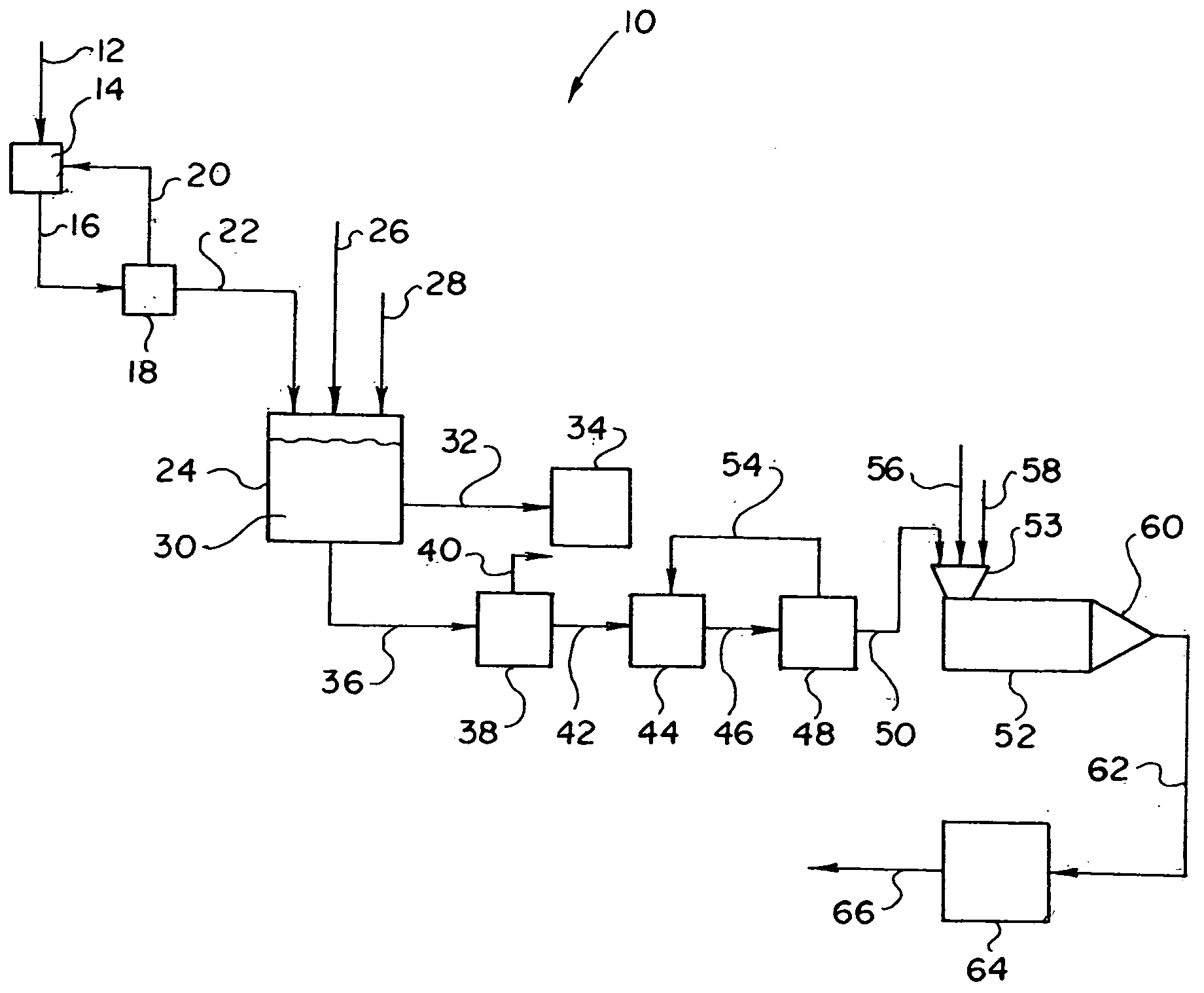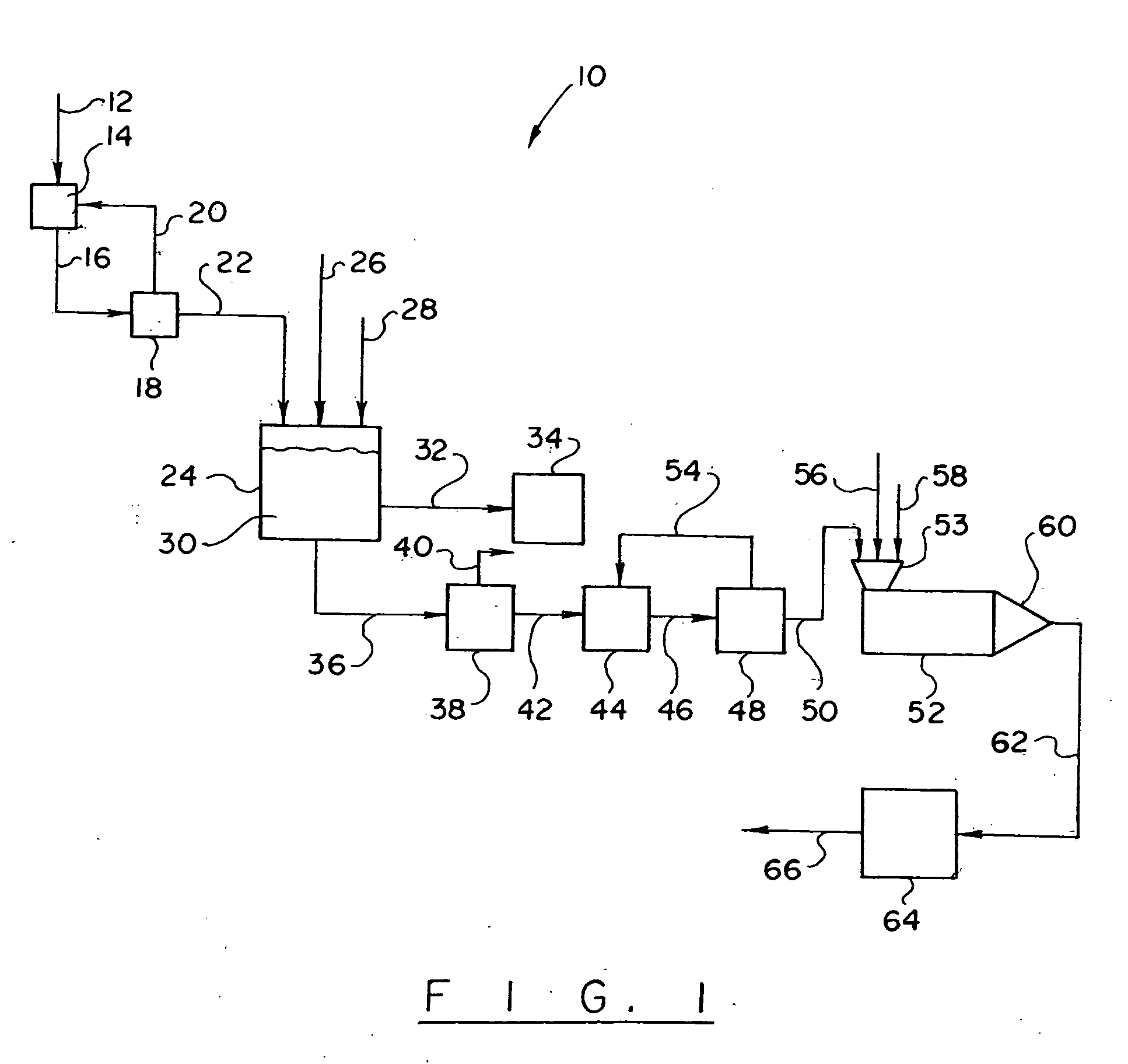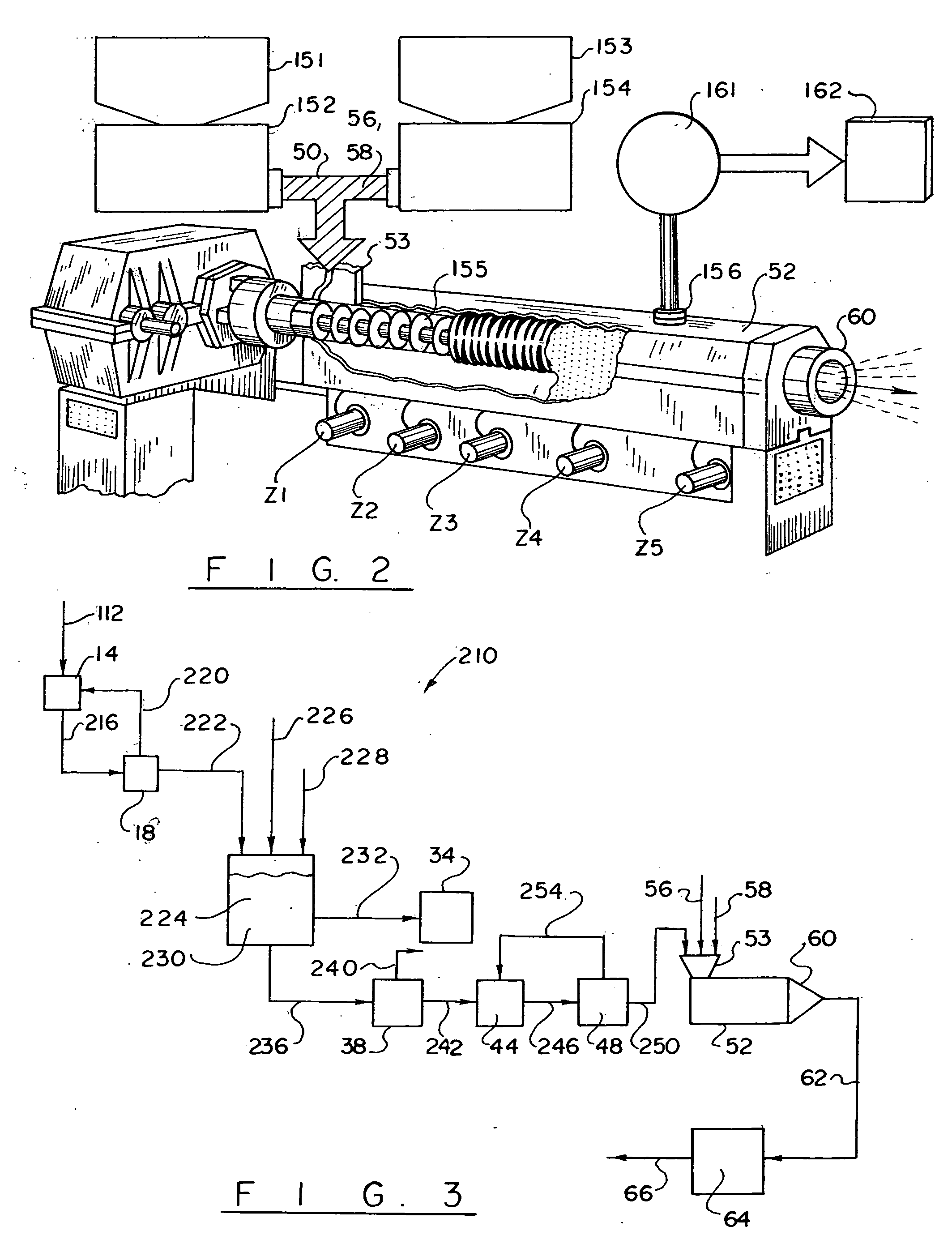Thermoplastic railroad cross-ties
a technology of thermoplastic railroads and cross-ties, applied in the direction of track maintenance, plastic recycling, track superstructure, etc., can solve the problems of limited commercial utility of byproducts, runoff into rivers, lakes and groundwater, and process problems, etc., to reduce escape
- Summary
- Abstract
- Description
- Claims
- Application Information
AI Technical Summary
Benefits of technology
Problems solved by technology
Method used
Image
Examples
examples
[0077] Formulation #1 was made by admixing: Phosphogypsum (a fertilizer process byproduct blend of calcium sulfate and phosphate) 23.5 pounds (10.7 kg), recycled high density polyethylene 16 pounds (7.26 kg), epoxidized soybean oil 225 grams and a titanium chelate @ 0.45 grams as coupling agent as manufactured by KENRICH Petrochemicals, Inc. The phosphogypsum and recycled high density polyethylene were dry mixed for 5 minutes. The epoxidized soybean oil and the chelate were blended for two minutes. The epoxidized soybean oil and chelate mixture was slowly added to the dry mixture of phosphogypsum and recycled polyethylene while it was mixing in the mixer. The time of mixing all ingredients together was 10 minutes (until compound was thoroughly mixed).
[0078] Formulation #2 was made by mixing: fluorogypsum @ 22.5 pounds (10.2), recycled high density polyethylene @ 16 pounds (7.26 kg), epoxidized soybean oil @ 225 grams, titanium chelate® 0.45 grams. The fluorogypsum and recycled high...
PUM
| Property | Measurement | Unit |
|---|---|---|
| density | aaaaa | aaaaa |
| density | aaaaa | aaaaa |
| weight average diameter | aaaaa | aaaaa |
Abstract
Description
Claims
Application Information
 Login to View More
Login to View More - R&D
- Intellectual Property
- Life Sciences
- Materials
- Tech Scout
- Unparalleled Data Quality
- Higher Quality Content
- 60% Fewer Hallucinations
Browse by: Latest US Patents, China's latest patents, Technical Efficacy Thesaurus, Application Domain, Technology Topic, Popular Technical Reports.
© 2025 PatSnap. All rights reserved.Legal|Privacy policy|Modern Slavery Act Transparency Statement|Sitemap|About US| Contact US: help@patsnap.com



